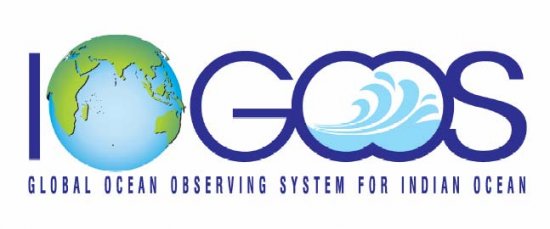ESSO - Indian National Centre for Ocean Information Services
(An Autonomous Body under the Ministry of Earth Sciences, Govt. of India)
Ocean Dynamics and Climate Workshop
Introduction
Chair: Gary Meyers
Rapporteurs: Peter Hacker,Ed Harrison
The Chairman of the Ocean Dynamics and Climate Workshop, Gary Meyers, reminded the participants that the purpose of the Workshop was to take the next steps in planning implementation of a basin-wide, pilot observing system, building on the results of the Workshop on Sustained Observations for Climate in the Indian Ocean (SOCIO), held in Perth, Australia, in November 2000. The results of SOCIO (http://www.marine.csiro.au/conf/socio/socio.html) called for a revision of plans for sustained pilot observations, with a critical eye on identifying what is feasible and what would have an impact. Feasibility is judged by the reality of getting the resources to put things in the water in the near term while sticking to the agreed research goals in the long term. Impact refers to the research and societal benefits that can be derived from pilot observations. The Chairman also asked the participants to keep in mind another outcome of the SOCIO Workshop-ocean-state estimation is a cross-linking theme integrating the observations.
The Workshop Chairman also recalled some significant findings outlined in the Conference overview papers summarized in the Overview Presentations section, above, covering recent progress in understanding the role of the Indian Ocean in regional climate variability and change, including advanced approaches to ocean-state estimation.
The circulation of the Indian Ocean is quite different from that of the Atlantic and Pacific Oceans, mainly because it has a closed boundary at low latitude to the north and an opening to the Pacific's warm equatorial waters to the east; this generates unusual currents (e.g., a three-dimensional monsoon circulation, the Indonesian Throughflow, and the Leeuwin Current) and unique heat transport and fluxes. A key conundrum is: How does the Indian Ocean get rid of the excess heat it gains through the sea surface? The answer to this question bears on the predictability of seasonal, inter-annual, decadal and longer-term climate variability and change. It also bears on understanding of the shorter time-scales and their important societal impacts (e.g., tropical cyclones, storm surges).
The intra-seasonal time-scale stands out in modeling and satellite-based observational studies as an exceptionally strong variability mode, often associated with important societal consequences, such as storm surges and floods. Peter Webster had identified the intra-seasonal time-scale as �the building block of the monsoons." The Indian Ocean, however, shows persistence and predictability on a range of scales from the intra-seasonal to the inter-annual. A sound understanding of seasonal to inter-annual variations and predictability may not be achieved without good data and models on the intra-seasonal time-scale.
Four papers were presented on the three main ocean-monitoring systems:
- Argo floats
- a basin-scale mooring array (for temperature, salinity and currents) and
- the SOOP XBT network.
|
Five papers were presented on Indian Ocean research and monitoring, to set the scene for linking climate observations to regional and societal issues, such as
- coastal marine resources
- regional marine activity (e.g., weather, safety at sea, long-term nearshore moorings) and
- activity in the Global Climate Observing System (GCOS)
- pelagic fisheries
Title |
Presented By |
Co-author |
|---|---|---|
| Global Climate Observing System | Paul Mason | William Westermeyer |
| GCOS Action Plan for Eastern and Southern Africa | Sok Appadu | Laban A. Ogallo |
| Weather and Climate over the Indian Ocean | Gabriel Vecchi | Ed Harrison S.Gadgil |
| Indian Ocean Structure and Climate from Satellite Data and Models | Tony Lee | - |
| Indian Ocean Climate Research Data Centers | Peter Hacker | P. Dutrieux, K. Radhakrishnan, E. Desa S. Wijffels |
Three other papers were presented on special though relevant topics.
Title |
Presented By |
|---|---|
| Operational Oceanography | Neville Smith |
| The Role of Salinity and Rainfall in Variability of the Indian Ocean | Claire Perigaud |
| Regional Marine Activities in La Reunion Island | Laurent Perron |
Extended abstracts of the above-mentioned presentations are available at
ftp://www.marine.csiro.au/pub/meyers
/Incois/iogoos/abstracts.jsp




